PinotFile: 10.40 October 20, 2016
|
Recently Tasted California Pinot Noir & ChardonnayIt is interesting to look at the change in taste for different California varietals over the past 20 years. At this year’s Wine Industry Financial Symposium, David Freed presented two circle graphs showing the Gomberg Fredrickson Annual Review of California Varietal Volume in 1993 and 2013.
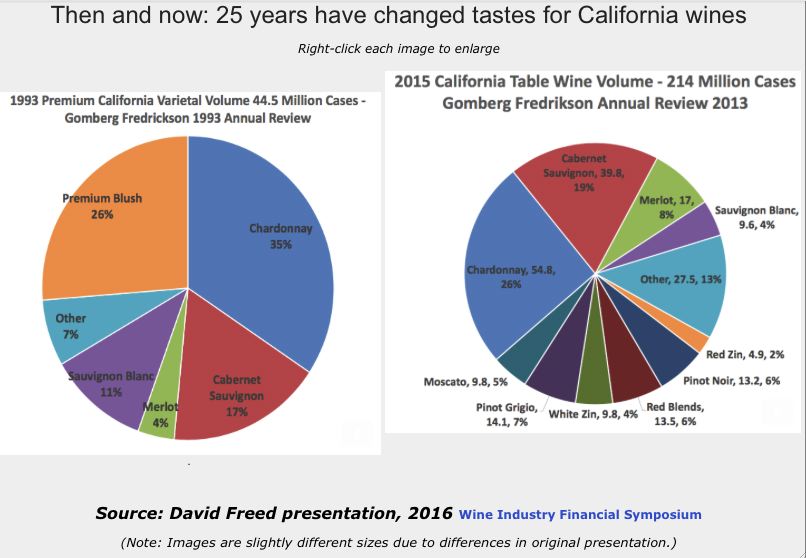 Pinot Noir was among the small “Other” category in 1993 but made up 6% of California Table Wine Volume (13.2 million cases) in 2013. Chardonnay, on the other hand, showed a 9% decrease in volume. The most striking change over the 20 years is the increase in volume of Premium Blush, Moscato and Pinot Grigio.
Benovia Winery, Santa RosaThe 2014 Pinot Noirs were reviewed in June 2016 shortly after bottling (www.princeofpinot.com/winery/276/). The single-vineyard Pinot Noirs have recently been released and reviewed again here after 4 months in bottle. Vintage 2014 was the third consecutive drought year in Sonoma County, but the growing season was ideal with the resulting crop much larger than average. There was just enough rain in the spring to charge with soil with water, and cool summer weather allowed the vines to thrive, leading to the earliest harvest on record. Winemaker Mike Sullivan made fewer than 1,400 cases of single-vineyard Pinot Noirs, all produced from sustainably farmed estate vineyards. Mike told me that he thinks the 2014 wines’ style falls intermediate between the bold richness of the 2012 vintage and the refined, more vibrant and less sappy vintage of 2013. I believe the wines need at least another year in bottle for most enjoyment. All tastings at Benovia are by appointment, available seven days a week, and are leisurely, seated tastings in Benovia’s ranch house located at 3339 Hartman Road in Santa Rosa. Visit www.BenoviaWinery.com for more information on the wines reviewed here or to acquire.
2014 Benovia Bella Luna Russian River Valley Pinot Noir 14.2% alc., $80. Release spring 2017. A blend of Benovia estate vineyards fruit. · Moderate reddish purple color in the glass. Quite approachable, with effusive aromas of black cherry, cardamom and peppery spices and a hint of oak. A bit exotically flavored, offering blueberry and black cherry fruit, spice and even a floral note. Inviting harmony, modest tannins, and a sweet cherry finish that is uplifting. By the time it is released, it should be orgasmic. Score: 92-93
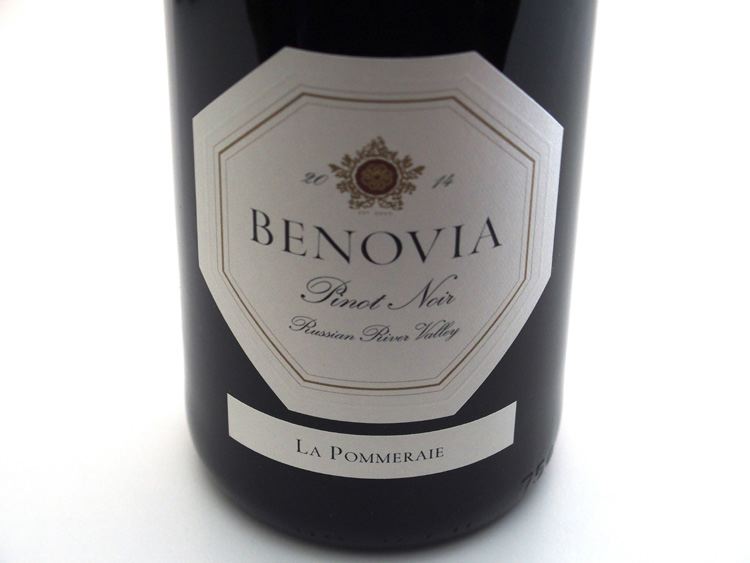 2014 Benovia La Pommeraie Russian River Valley Pinot Noir 14.3% alc., pH 3.63, TA 0.58, 498 cases, $60. Released September 2016. Sourced from Zio Tony Vineyard, a former apple orchard located along the Laguna Ridge at the edge of the Green Valley of Russian River Valley AVA. High density plantings of Dijon clones 777 and “828.” 10-day cold soak, indigenous yeast fermentation lasting almost 3 weeks, aged 16 months in French oak barrels, 40% new. · Moderately dark reddish purple color in the glass. The nose is rather primary, grudgingly offering scents of dark fruits, vanillin and toast. More appealing on the palate, with a mid weight plus core of luscious black fruits. Still a bit unyielding, but with a lush mouthfeel, and a persistent finish. When tasted the following day from a previously opened and re-corked bottle, the nose was more giving and the fruit more vivid. A lush, fruit-driven wine, but not in a compote style. Score: 92
2014 Benovia Martaella Vineyard Russian River Valley Pinot Noir 14.3% alc., pH 3.59, TA 0.57, 440 cases, $60. Released September 2016. Benovia’s largest estate vineyard with densely planted Pinot Noir vines. Heirloom and Dijon clones. 25% whole cluster. 8-day cold soak, indigenous yeast fermentation lasting nearly 2 weeks, aged in French oak barrels, 36% new. · Moderately dark reddish purple color in the glass. Initially, the aromas of black fruits and toasty oak are subdued, arriving with more purpose over time in the glass. Somewhat unevolved, but enticing, with a compelling core of oak-kissed blueberry-pomegranate and blackberry fruits backed by firm tannins. When tasted the following day from a previously opened and recorked bottle, the wine was more aromatic with more fruit expression and personality. Expect this one to evolve nicely over the next few years. Score: 93
2014 Benovia Tilton Hill Vineyard Sonoma Coast Pinot Noir 14.4% alc., pH 3.53, TA 0.61, 492 cases, $60. Released September 2016. This vineyard is on a ridge top near the town of Freestone, a cold site just a few miles inland from the Pacific Ocean. 8-day cold soak, indigenous yeast fermentation for almost 2 weeks, aged in French oak barrels, 45% new. · Moderate reddish purple color in the glass. A blend of blackberry and black raspberry fruit aromas with oak-driven notes of sandalwood and vanilla. A boisterous wine, with plenty of purple and black fruit saturating the mid palate and carrying over on the intensely fruity and lengthy finish. Gorgeous fruit, but a bit one dimensional with noticeable oak presence that should integrate further over time. Score: 90
2014 Benovia Cohn Vineyard Sonoma County Pinot Noir 14.1% alc., pH 3.78, TA 0.56, 440 cases, $75. Released September 2016. This is sourced from one of the oldest Pinot Noir vineyards in the region planted in 1970. The vines are organically dry farmed and efforts to reinvigorate the soil and bring new life to the vineyard has been rewarded. A massale collection of most likely Martini 13 and Pommard clones. Yields just over 1 ton per acre. 8-day cold soak, indigenous yeast fermentation lasting almost 2 weeks, aged in French oak barrels, 46% new. · Moderately dark reddish purple color in the glass. Aromas of dark red cherry and berry are infused with oak. Modest in weight, with a giving core of cherry and berry fruits. The comforting texture and suave tannins make very easy approachability. The barrel treatment is still evident on the finish. Score: 91
Ernest Vineyards, Santa RosaA portrait of Ernest is displayed on the labels of the wines. Ernest was a role model for his grandson, Todd Gottula, who founded Ernest Vineyards with his wife Erin Brooks in 2012. Currently, Ernest Vineyards produces wine at Punchdown Cellars, but is building a modern production facility, called Grand Cru, located in northern Sonoma County, that will be a crush facility with space enough for Ernest and a number of like-minded small producers. Expected opening is summer 2017. Currently, Ernest Vineyards works with 17 different sites or 24 acres of land. The winery’s goal is to offer value so the wines are something affordable for everyone to enjoy. The winemaker is Kent Humphrey (Eric Kent) and assistant winemaker is Hanna Chort. The wines are sold through a mailing list available at the impressive website, www.ernestvineyards.com.
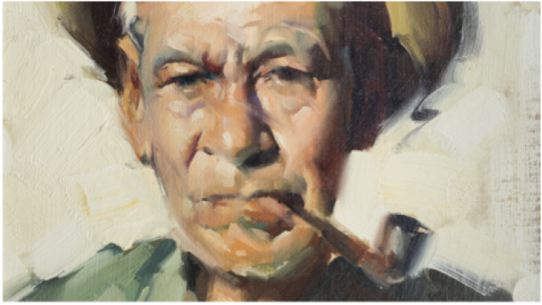
2014 Ernest Vineyards The Artist Bush Vineyard Sonoma Coast Pinot Noir 12.5% alc., 131 cases, $55. From a 12-acre vineyard planted in 2012 and developed for a select set of Dutton Ranch clients including Ernest. The vineyard is located in the Green Valley of the Russian River Valley AVA. Calera selection harvested at 22.0º average Brix. Aged 10 months in French oak barrels, 40% new. · Moderately dark reddish purple color in the glass. Glorious aromas of dark cherry reduction sauce and spice emerge over time in the glass. Very satisfying in the mouth, with mid weight flavors of black cherry, savory herbs, cola and subtle oak. Sleek tannins with a silky texture, and an exceptionally long and generous finish. An impeccably balanced wine that won me over. Score: 93
2014 Ernest Vineyards The Settler Cleary Freestone Ranch Vineyard Sonoma Coast Pinot Noir 12.5% alc., 388 cases, $58. A 6-acre vineyard downslope from Freestone Hill Vineyard in the West Sonoma Coast. Clones are Pommard, 777, 667 and 113 harvested at average Brix of 23.1º. Aged 10 months in French oak barrels, 30% new. · Moderately dark reddish purple color in the glass. Fruit aromas of blueberry and black cherry are complimented by scents of rose petal and oak. A mid weight plus styled wine, with ripe fruited flavors of blueberry-pomegranate, plum and black cherry with a background hint of spice and herbs. The tannins are silky and integrated, the finish is modest but pleasant and the overall impression is one of harmony. Score: 91
2014 Ernest Vineyards The Grandfather Rayhill Vineyard Sonoma Coast Pinot Noir 13.0% alc., 161 cases, $56. Clone 115 harvested at 23.4º Brix. Aged 10 months in French oak barrels, 30% new. · Moderate reddish purple color in the glass. An array of aromas greet the nose, including black cherry, forest floor and oak. A harmonious offering, with teasing flavors of dark cherry, red currant and supportive oak. Easy to cozy up to with invisible tannins, and a grand finish that goes on and on. Score: 92
2014 Ernest Vineyards The Engineer Romanini Vineyard Sonoma Coast Pinot Noir 12.0% alc., 260 cases, $51. This vineyard was originally planted in Sonoma Valley in 1954 by Antonio Romanini. Pommard clone and Calera selection harvested at 21.9º average Brix. Aged 10 months in French oak barrels, 40% new. · Moderate reddish purple color in the glass. Aromas of forest floor, pine needle, Asian spice, red cherry and red raspberry lead off. The savory fruits are darker tasting, and the overall tone is rustic and forestry. Rather lean, with vivid acidity and a dry finish. Score: 89
2015 Edaphos Green Valley Ranch Chardonnay 12.5% alc., 81 cases, $28. Pronounced “ee-dah- fos,” it means “base,” or “soil” in Greek. The strategy behind this label is exploration, experimentation and applying lesions learned making wine under the winery’s other labels. These are basically laboratory, small-lot wines that incorporate new approaches to winemaking with different styles and sometimes off beat grape varieties. Rued-Z clone from Green Valley Ranch harvested at 22.3º average Brix. Cold fermented at 50ºF and aged in 2/3 stainless steel and 1/3 neutral oak. · Very light golden yellow color in the glass. Highly floral nose, with added aromas of white peach and spice. A wine with personality, offering flavors of citrus, white stone fruits, apricot and edible flower. Exceptional grip and length on the bright finish. This wine works beautifully as a stand-alone drinker, or can pair exceptionally well with a variety of foods. Score: 93
2014 Ernest Vineyards The Bombardier Black Emerald Vineyard Russian River Valley Chardonnay 13.5% alc., 141 cases, $42. Sourced from a 17-acre vineyard on Vine Hill Road in the heart of the Russian River Valley. Originally planted by Duff Bevill to Old Wente clone of Chardonnay in the 1960s, today the owners are Dennis and Mary Black and the site is called Black Emerald. 75% Black Emerald and 25% Green Valley Ranch vineyards. Wente 4 and Rued clones harvested at an average Brix of 23.2º. Aged 10 months in French oak barrels, 43% new. · Moderate golden yellow color in the glass. A more ripely fruited wine with more oak seasoning. Aromas of charred lemon, yellow apple, poached pear, pastry cream and spice. Richly flavored, with tastes of lemon, pear, pineapple and toast. Viscous in texture, with some fruit persistence on the finish. Rewarding ripe fruit flavors, but lacking some of the vibrancy exhibited by The Farmer bottling. Score: 90
2014 Ernest Vineyards The Farmer Green Valley Ranch Sonoma Coast Chardonnay 13.0% alc., 298 cases, $45. Sourced from a vineyard planted by Warren Dutton in 1969 west of the town of Graton. The clone is Rued-Z harvested at 23.0º average Brix. Aged 10 months in French oak barrels, 35% new. · Moderate golden yellow color and clear in the glass. Complex nose offering scents of lemon rind, cake spice, white flower, and flint. Nicely lifted on the palate, with flavors of yellow stone fruits and citrus. Refined and sophisticated, with impeccable balance and soothing, but not creamy texture. Score: 92
Gloria Ferrer Caves & Vineyards, SonomaCelebrating 30 years, Gloria Ferrer is better known for its excellent sparkling wines, but it also offers solid value-priced Pinot Noir and Chardonnay. Visit www.gloriaferrer.com.
2014 Gloria Ferrer Carneros Estate Chardonnay 14.1% alc., $25. Estate grown. Whole cluster pressed, barrel aged 9 months in French oak barrels. · Light golden yellow color in the glass. A very nicely composed wine, with pleasing aromas of apple and lemon oil, and flavors of citrus, apple and pastry cream. Slightly viscous in the mouth, yet crisp and juicy with no oak intrusion in a balanced style with charm. Score: 91
2013 Gloria Ferrer Carneros Estate Pinot Noir 13.5% alc., pH 3.72, TA 0.58, $27. 21st release for this wine. 100% de-stemmed, 2-day cold soak, aged 9 months in 96% French and 4% Hungarian oak barrels, 14% new. · Moderate reddish purple color in the glass. Earth-kissed aromas of black raspberry with a tag of toasty oak. Mid weight flavors of black cherry and black raspberry with a hint of dark chocolate and tobacco from barrel aging. Nicely balanced, with good structure and a modest finish. Score: 88
Loos Family Winery, San FranciscoA very small, urban boutique winery celebrating its tenth anniversary. Owner and winemaker Brad J. Loos is a member of the Guild of Sommeliers. Emphasis is on ecologically balanced vineyard sources, extended cold soak, native and cultured yeast fermentation, gentle bladder pressing, gravity flow wine transfer, premium French oak barrel aging, and minimal racking. Tasting is by appointment in San Francisco. The winery is also the home of Enological Innovations™, that includes several U.S. patents and patent applications relating to fermentation technology. Visit the website at www.loosfamilywinery.com.
2014 Loos Family Coastside Cuvée Santa Lucia Highlands Pinot Noir 14.3% alc., pH 3.69, TA 0.62, 300 hand-numbered bottles, $42. Primarily sourced from Doctor’s Vineyard. Mainly Dijon 777 clone and Swan selection harvested at 26.5º Brix. Over 10% whole cluster, 4-day cold soak, 14-day primary fermentation using feral and selected proprietary yeasts. Aged 11 months in medium toast plus French oak barrels, 70% neutral and 30% new. Bottled unfined with nominal polish filter. · Moderate reddish purple color in the glass. Aromas of grape, Damsel plum, black raspberry and nutty oak. Mid weight flavors of black cherry and blueberry-pomegranate with a straw note in the background. The tannins are well matched, and the finish is particularly heady. The wine picks up fruit intensity over time in the glass, yet there is something about the flavor profile that puzzles me. Score: 89
2015 Loos Family La Cruz Vineyard Sonoma Coast Chardonnay 14.5% alc., pH 3.36, TA 0.848, 300 handnumbered bottles, $28. 98.5% Chardonnay, 1.5% Sauvignon Blanc. Wente 4 clone. Harvest Brix 23.2º. 10% whole cluster, 4-day cold soak, 14-day primary fermentation, aged 11 months in French oak barrels, 70% neutral and 30% new. Bottled unfined with nominal polish filter. · Moderate golden straw color in the glass. Inviting aromas of apple, pear, lemon curd and buttery brioche. A nice blend of fruit and oak attributes, with flavors of yellow apple, lemon, honey, pineapple, and blond caramel with a hint of toast in the background. Mildly creamy in texture with brisk acidity and some finishing purpose. Score: 90
Pellegrini Wine Company, Santa RosaPellegrini Wine Company is best known for its estate Olivet Lane Vineyard Pinot Noir and Chardonnay, but the winery also produces appellation Pinot Noir and Chardonnay sourced from the winery’s own and other Russian River Valley vineyards. Since Robert Pellegrini took over sole ownership of the winery in 2013, his focus has been on furthering the quality of Pellegrini wines and the provenance of the Olivet Lane Vineyard. He brought on winemaker Lynn Krausmann to participate in this focus. Lynn was previously a winemaker for Williams Selye, Esterlina Vineyards and Clos du Bois. The Olivet Lane Vineyard and Pellegrini appellation wines are produced on site at the estate winery on West Olivet Road that was designed specifically for small lot Pinot Noir and Chardonnay production by a former winemaker, Merry Edwards. The Pellegrini Russian River Valley Pinot Noir and Pellegrini Russian River Valley Chardonnay are available through the winery and website, and at wine retailers and fine restaurants in select markets nationally. Visit www.pellegrinisonoma.com.
2014 Pellegrini Russian River Valley Pinot Noir 14.2% alc., pH 3.64, TA 0.54, 727 cases, $35. · Nicely perfumed with hi-tone aromas of Bing cherry, black raspberry, blackberry and spice. The mid weight core of black cherry fruit pleases, as does the soothing mouthfeel. The oak overlay is a bit prominent and the finish is rather modest, but this is a solid wine that will please at the table. Score: 89
2015 Pellegrini Russian River Valley Unoaked Chardonnay 14.1% alc., pH 3.29, TA 0.74, 2,137 cases, $22. · Moderately light golden yellow color in the glass. Fresh aromas of cut apple, lychee and pear transition to flavors of apple, pear, grapefruit and nori on the palate. Very crisp and clean, with a slightly creamy mouthfeel. Score: 91
Ram’s Gate Winery, SonomaThis is a high level producer with a focus on Pinot Noir and Chardonnay from marquee vineyards in Sonoma County and Carneros and 28 acres of estate vines in Carneros. The inspired architecture and interior design of the winery make it a destination to savor along with the outstanding wines. Veteran winemaker Jeff Gaffner (Saxon Brown, Black Kite) crafts the wines. The wines are produced in limited quantities so the wines are rarely available on the winery’s website. The best way to acquire the wines is to visit the winery or join the mailing list at www.ramsgatewinery.com. The Chardonnays reviewed here are barrel aged for 11 months in French oak barrels, ranging from one-third to two-thirds new.
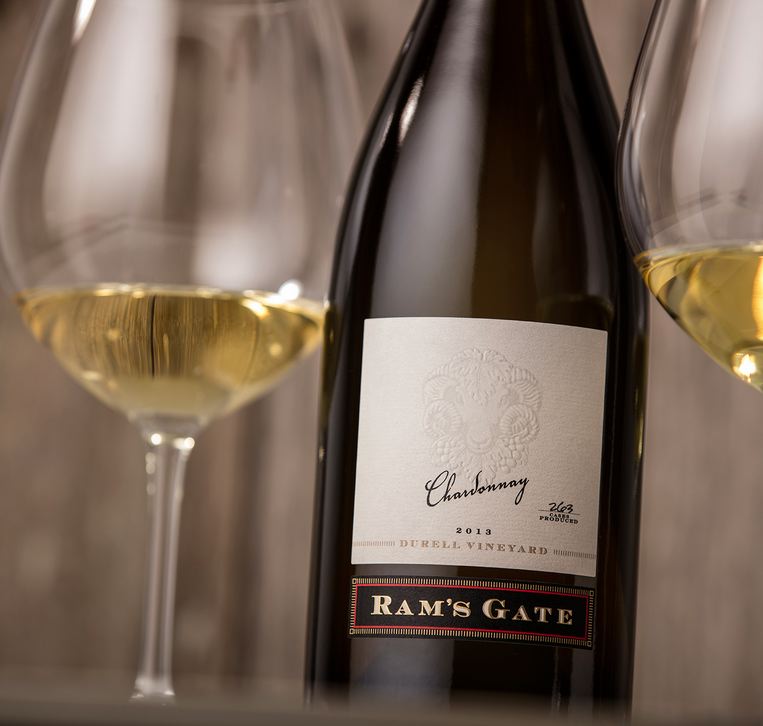
2014 Ram’s Gate Ram’s Gate Estate Vineyard Carneros Chardonnay 14.6% alc., pH 3.60, TA 0.60, 227 cases, $76. 4.2-acres of hillside vines planted on the Ram’s Gate Estate Faultline Vineyard. A blend of five clones. Aged 11 months in French oak barrels, 33% new. · Moderate golden yellow color in the glass. This wine’s nose speaks more of salinity and lees with only a hint of lemon curd and oak aromas. Slightly creamy on the palate, with flavors of lemon, apple and pastry cream, in a sleek, fresh and understated style that has exemplary balance and only a bit of oak in the background. Score: 91
2014 Ram’s Gate Green Acres Hill Vineyard Carneros Chardonnay 14.7% alc., pH 3.30, TA 0.64, 263 cases, $62. The first vineyard that Vittorio Sangiacomo planted. Old Wente clone. Aged 11 months in 40% new French oak barrels. · Moderate golden yellow color in the glass. An array of enticing aromas include lemon, Bartlett pear, toasty brioche and a white flower note. Also a bit floral on the palate, with added flavors of lemon and pineapple. Somewhat restrained, with bracing acidity, a slightly viscous mouthfeel, and some length on the citrus-driven finish. Nothing but good things to say about this wine. Score: 93
2014 Ram’s Gate Hudson Vineyard Carneros Chardonnay 15.1% alc., pH 3.60, TA 0.57, 359 cases, $64. Calera clone grown on the Napa County side of Carneros. · Moderate golden yellow color in the glass. Ripe fruit aromas of lemon pie, pear and pineapple. The essence of lemon is complimented by flavors of pear, apple and spice in a highly delicious, heady version of Chardonnay. Very slightly creamy in texture, with spry acidity, and uncompromising intensity and length on the finish. Impressive balance at this high ABV. This is a Chardonnay to drink by itself, offering a contemplative experience from one of California’s grand cru Chardonnay vineyards. Score: 94
2014 Ram’s Gate Durrell Vineyard Sonoma Coast Chardonnay 14.9% alc., pH 3.30, TA 0.61, 355 cases, $74. Aged 11 months in 33% new French oak barrels. · Moderate golden yellow color in the glass. Elevating aromas of golden apple, lemon and nutty oak draw you into the glass. Exceptional harmony, with acidity in its place, and flavors of lemon, Asian pear, vanilla and bark. Score: 92
Ryan Cochrane Wines, San FranciscoRyan crafts very small quantities of Pinot Noir and Chardonnay from Santa Barbara County. He selects grapes from the best vineyards he can source and makes wines that reflect the sites from which they originated. Ryan trained under noted winemaker Roger Nicolas of RN Estate in Paso Robles, where he is now the assistant winemaker. Ryan produced his inaugural Ryan Cochrane Pinot Noir in 2010. Tasting are not available, but these are truly hand crafted artisan wines made with passion available for sale on the winery website. Visit www.ryancochranewines.com.
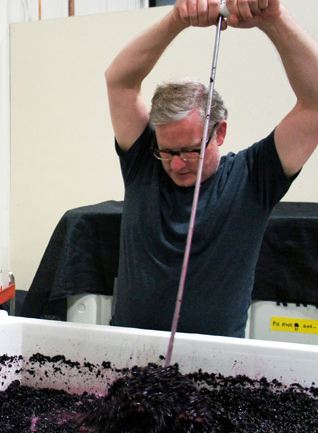
2014 Ryan Cochrane Solomon Hills Vineyard Santa Maria Valley Pinot Noir 13.3% alc., 270 cases, $43. 30% 115, 30% 667, 40% Pommard 5. 20% whole cluster. Feral yeast primary fermentation. Aged 10 months in French oak barrels, 20% new. Bottled unfined and unfiltered. · Moderate reddish purple hue in the glass. Both cherry and berry fruits and oak aromas blend on the nose. Elegantly styled, with mid weight flavors of cherry, strawberry, tobacco and dried herbs, even a tomato note. Oak plays a prominent role in this wine that has a pleasing cherry-fueled, dry finish. Score: 89
2014 Ryan Cochrane Fiddlestix Vineyard Sta. Rita Hills Pinot Noir 14.2% alc., 190 cases, $43. 60% 115, 20% 113, and 20% 667. 20% whole cluster. Aged 10 months in French oak barrels, 20% new. Bottled unfined and unfiltered. · Moderately light cherry red hue in the glass. Aromas of cherry, strawberry and sandalwood lead to a mid weight flavored wine featuring dark red cherry, cranberry, strawberry and raspberry fruits complimented by a hint of spice, The tannins are tame, the wine is nicely balanced, and the finish is pleasantly exuberant. Score: 92
2014 Ryan Cochrane Solomon Hills Vineyard Santa Maria Valley Chardonnay 13.3% alc., 70 cases, $34. Clone 4. Barrel fermented, 100% malolactic fermentation with lees stirring. Aged 10 months in French oak barrels, 33% new. · Moderately light golden yellow color in the glass. Aromatically pleasing with scents of yellow apple, yellow peach and brioche. Slightly creamy on the palate, with flavors of lemon, peach, honey, baking spices and toast. Highly flavorful, with a good acid spine, and a cleansing finish. Score: 92
Talisman Wine, SonomaProprietors Scott and Marta Rich recently sent me all of their 2013 Pinot Noirs, some of which are very special, super limited, small production wines. Readers of the PinotFile know that I have been a long time fan of the Pinot Noirs produced by Talisman, not only for their individuality but also their age ability. Because of the inclusion of some whole clusters, extended post fermentation maceration, and lengthy aging in a relatively high proportion of new French oak, the wines benefit from cellaring. The high percentage of new oak and alcohol tends to mask the terroir when the wines are young. If opened upon release, they need decanting. A quaint tasting room is located in Glen Ellen and is open Thursday through Monday from 12:00 p.m. to 5:00 p.m.. A personal, comparative Pinot Noir tasting experience is offered. Visit www.talismanwine.com.
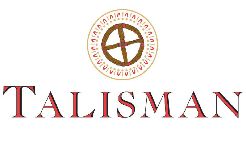
2013 Talisman Cuvée No. 5 North Coast Pinot Noir 14.2% alc., 217 cases, $38. Released October 1, 2016. Sourced from a few young vineyards. 25% whole cluster, feral yeast fermentation, aged 19 months in French oak barrels, 44% new. · Moderate reddish purple color in the glass. The nose is quite giving, with bright aromas of black cherry, strawberry, forest floor and exotic spices. Forward drinking and middleweight in style, with flavors of dark red and black cherry, black berry and anise. The whole cluster has contributed good structure to the wine. Not particularly complex, but easy to like. Score: 89
2013 Talisman Weir Vineyard Yorkville Highlands Pinot Noir 14.2% alc., 241 cases, $65. Released October 1, 2016. Planted in 1992, this vineyard sits at 850-1000 feet elevation. Clones 2A, and Pommard, along with DRC suitcase and a Rochioli selection planted in gravelly, loamy clay. Aged in French oak barrels, 70% new. · Moderately light reddish purple color in the glass. Aromas of cherry, forest path, dried herbs and floral bouquet. A very savory wine, with light to mid weight flavors of black cherry and black raspberry fruits dominated by flavors of herbs, eucalyptus and toasty oak. Firm, but supportive tannins, with a generous finish of some length. Still quite savory when tasted the following day from a previously opened and re-corked bottle. Score: 90-91
2013 Talisman Gunsalus Vineyard Russian River Valley Pinot Noir 14.6% alc., 314 cases,pH 3.67, TA 0.60, $54. Released May 1, 2016. This vineyard, planted in 2001, is farmed by Pamela and Glen Gunsalus. It is located in the Green Valley of Russian River Valley AVA. Clones 114, 115 and 777. 30% whole cluster fermentation. 1 week cold soak, feral yeast primary fermentation, 36 days in fermenter, and aged 19 months in French oak barrels, 50% new, without racking until just before bottling. · Moderately light reddish purple color in the glass. Hi-tone aromas of Bing cherry, strawberry and mild toasty oak lead off. Dark red fruited and mid weight in style, with complimentary oak seasoning and a vivid acid spine. Quite approachable now, with a modestly intense finish. Score: 90-91
2013 Talisman Wildcat Mountain Vineyard Sonoma Coast Pinot Noir 14.2% alc., pH 3.68, TA 0.57, 164 cases, $56. Released May 1, 2016. The highest vineyard in the appellation at an elevation of 750 feet. Vines are planted in rocky soils of volcanic origin and exposed to the full brunt of fog and cold airflow that streams off San Pablo Bay. The vineyard was established in 1998 by Nancy and Tony Lilly and their partner, winemaker Steve MacRostie. 25% whole cluster, cold soak, feral fermentation both primary and malolactic, extended post fermentation maceration, and aging 19 months in French oak barrels, 57% new. · Moderate reddish purple color in the glass. The nose opens slowly in the glass, revealing aromas of wild berries, underbrush and forest floor. Good attack of Damsel plum, black cherry and purple berry flavors with an earthy undertone. Some drying tannins show up on the finish. Much more aromatic with more finishing power and length when tasted the following day from a previously opened and re-corked bottle. Score: 91-92
2013 Talisman Jamison Vineyard Destein Estate Bennett Valley Pinot Noir 14.4% alc., 51 cases, $48. Released June 1, 2016. Inaugural bottling from this vineyard. This vineyard receives the brunt of cold air through the Petaluma Gap. 565-625 feet elevation. Clone 777 planted in 1996. Aged 20 months in French oak barrels, 50% new. · Moderate reddish purple color in the glass. Aromas of rhubarb, raisin, bruised apple, earthy flora and a touch of oak. The core of fruit flavors consist of boysenberry and blackberry with nutty oak in the background. Nicely balanced, with a satiny texture, but nothing stands out, with the fruit fading quickly on the finish. Better the following day when tasted from a previously opened and re-corked bottle, with a sappy dark fruit compote character, and resolution of the bruised apple note evident upon opening. Score: 87-88
2013 Talisman Red Dog Vineyard Sonoma Mountain Pinot Noir 14.4% alc., 413 cases, $56. Released May 1, 2016. Clones 115, 777 and Pommard 5. Aged 18 months in French oak barrels, 59% new. · Moderately light reddish purple color in the glass. Aromas of black cherry, graphite and a hint of oak combine in a pleasing perfume. The mid weight flavors of black cherry, pomegranate and spice evolve slowly over time in the glass. Nicely composed, with a juicy underpinning, slightly astringent tannins, a silky texture and a modest finish. Considerably more fruit expression and finishing length the following day when tasted from a previously opened and re-corked bottle. The oak treatment is very complimentary. Score: 91-92
2013 Talisman Red Dog Vineyard Dijon Clones Sonoma Mountain Pinot Noir 14.4% alc., pH 3.66, TA 0.62, 413 cases, $68. Released October 1, 2016. This vineyard, planted in 2000, is located high on the northwestern flank of Sonoma Mountain at 800 feet elevation and is exposed to cool air and fog from the Pacific Ocean through the Petaluma Gap. Clones are predominantly Pommard with lesser amounts of Dijon 115 and 777. After feral fermentation, the wine underwent extended maceration before pressing and barreling. Aged 19 months in French oak barrels, 62% new. · Moderately light reddish purple color in the glass. Aromas of black cherry, mushroom and toasty oak. Intense attack of black cherry fruit with impressive palate presence. Weight and weightlessness combined with generous intensity on the finish. The satiny texture seduces, the tannins are well integrated, and the charming cherry fruit delights. When tasted the following day from a previously opened and re-corked bottle, the fruit continued to charm and the wine had opened further. This bottling needs more time in bottle to integrate the oak. Score: 92-93
2013 Talisman Adastra Vineyard Los Carneros Pinot Noir 14.9% alc., 316 cases, $56. Released October 1, 2016. This vineyard, planted in 1994 in clay loam soils, is CCOF organically certified and farmed by Chris Thorpe and Edwin Richards. Clones include 113, 115, 777, Swan, Pommard, Wädenswil 2A and suitcase selections. Aged in French oak barrels, 62% new. · Moderate reddish purple color in the glass. Nicely perfumed with heady scents of blueberry, cherry, cola and subtle oak. An array of dark red and blue fruits are offered in a mid weight styled wine, with a muscular tannic backbone but balancing acidity. The oak treatment peaks on the finish that reveals a bit of alcoholic warmth. When tasted the following day from a previously opened and recorked bottle, there was better oak and tannin integration, more polish, but still a hint of heat on the finish. Score: 89-90
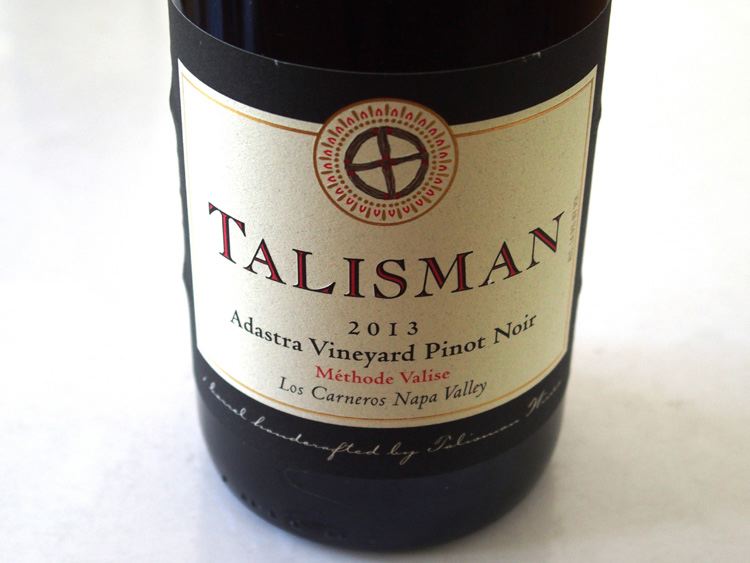 2013 Talisman Adastra Vineyard “Méthode Valise” Los Carneros Pinot Noir 14.9% alc., 20 cases, $125. Released October 1, 2016. One barrel from a suitcase selection. CCOF certified organic grapes planted in 1994. 100% whole cluster, feral yeast fermentation, aged in a new French oak barrel. · Moderate reddish purple color in the glass. Very shy nose offering only oak spice aromas without fruit. A serious, age worthy wine with a mid weight core of black cherry fruit enhanced with flavors of savory herbs and exotic whole cluster driven spices. Substantial tannins yet not indulgent, with remarkable length and intensity on the finish. When tasted the following day from a previously opened and re-corked bottle, the nose was still primary, but this wine was clearly the most complex and interesting in the 2013 lineup. It will definitely benefit from several years in the cellar. Score: 93-94
Recently Tasted Oregon Pinot NoirThere was a time, not long ago, when Oregon Pinot Noir offered tremendous quality at reasonable prices. Recently, however, the rapid increase in popularity of Oregon Pinot Noir has spurred producers to jack up prices and in some cases elevate prices to levels that can only be interpreted as greedy. Although research shows that consumers are trading up and premiumization is driving the market in people over the age of 55 (see chart below), there has to be a limit to that trend and consumers younger than 55 are not participating in premiumization. Fortunately, the producers whose wines are reviewed here have continued to offer their wines at affordable prices.
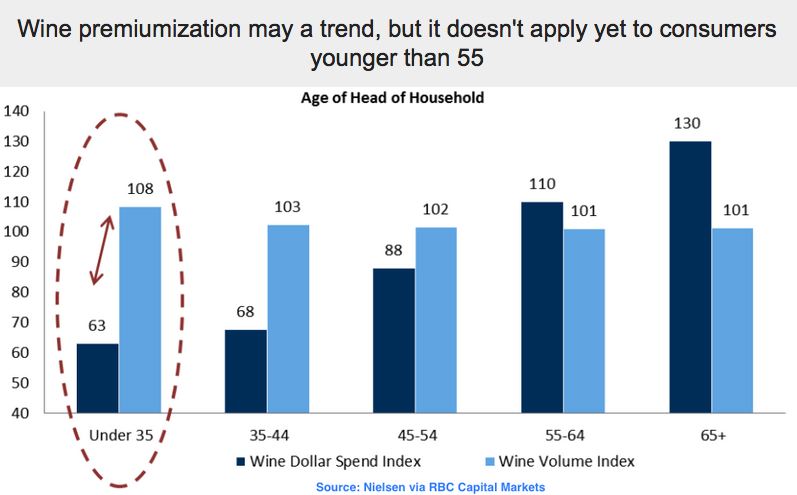
Anam Cara Cellars, Chehalem Mountains
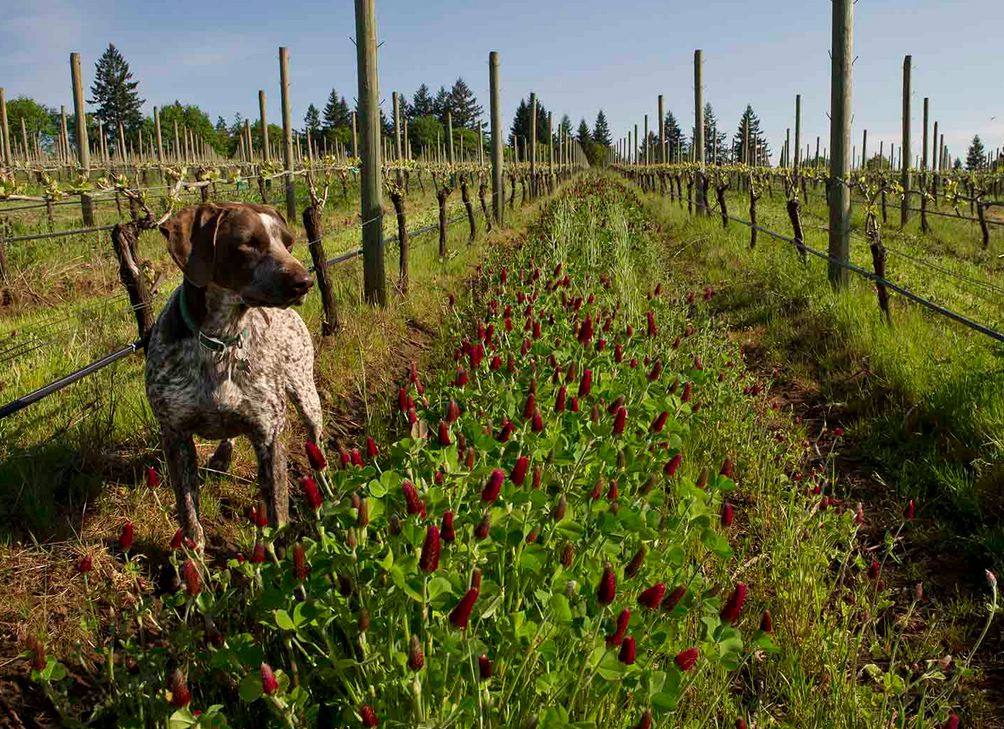 After fifteen years, proprietors Sheila and Nick Nicholas have downsized their operation, but still produce a very inviting range of limited production Pinot Noirs from the 36-acre Nicholas Vineyard. I have been a fan of the wines for many years, reflected in the many articles written about this winery in the PinotFile. The winery’s tasting room is located in downtown Newberg (check website for hours). Tasting by appointment is available at the vineyard in Sherwood. Visit www.anamcaracellars.com.
2014 Anam Cara Nicholas Vineyard Chehalem Mountains Oregon Pinot Noir 187 cases, $37. Release spring 2017. 20% Dijon 115, 20% Pommard, 20% Dijon 114, 20% Wädenswil and 20% Dijon 777. Aged in French oak barrels, 22% new. · Moderately light reddish purple color in the glass. Highly engaging aromas of cherry, forest floor, spice and rose petal. Mid weight flavors of cherry and raspberry please. A cheerful, bright wine, with nice balance, the slightest bit of oak seasoning, and a bit of cherry persistence on the finish. Score: 90
2014 Anam Cara Nicholas Vineyard Reserve Chehalem Mountains Oregon Pinot Noir 147 cases, $50. Release spring 2017. 40% Dijon 777, 20% Dijon 115, 20% Pommard, 10% Dijon 114 and 10% Wädenswil. Aged in French oak barrels, 35% new. · Moderate reddish purple color in the glass. Soaring perfume of black cherry, earthy flora and spice lead to a vibrant and expansive palate of dark cherry, raspberry and red currant flavors framed by vigorous but complimentary tannins. Silk and satin in texture, with graded oak seasoning, and impressive length on the juicy finish. Score: 92
2014 Anam Cara Heather’s Reserve Chehalem Mountains Oregon Pinot Noir 14.4% alc., 50 cases, $70. Release spring 2017. Nicholas Vineyard. 35% Dijon 114, 35% Dijon 115 and 30% Wädenswil. A selection of specific rows and vines pruned for low yields and barrels that excelled before blending. An elegant expression of the vineyard in this vintage. Aged in French oak barrels, 75% once-filled. · Moderately light reddish purple color in the glass. Lovely perfume of crushed black cherries, raspberries and wood spice. Discreetly concentrated flavors of cherry and cranberry with a submerged oak accent. Light on its feet, crisp and juicy, with a suede texture and a vibrant finish. An elegant wine that will seduce with its aromatics and lithe demeanor. Score: 92
2014 Anam Cara Mark VIII Chehalem Mountains Willamette Valley Pinot Noir 50 cases, $70. Release spring 2017. Nicholas Vineyard. A selection from reserve barrels with the highest percentage of new oak (40%) meant to be a bold expression of the vineyard in this vintage. 50% Pommard and 50% Dijon 777. · Moderately dark reddish purple color in the glass. Aromas of black cherry, black raspberry, spice and tobacco lead off. Full-bodied and structured, with flavors of purple and black fruits. Sleek and velvety in the mouth, offering the slightest oak imprint, and exhibiting a very long and mighty finish. A masculine, fruit-driven wine. Score: 92
Big Table Farm, Yamhill-CarltonBig Table Farm has received considerable and well-deserved notoriety of late. The farm and winery founded by Clare Carver and Brian Marcy, Napa expatriates, was featured in a lengthy article in the October issue of Sunset Magazine. I have raved about the wines going back to their first releases from the 2006 vintage, have visited their farm twice and can say, “I knew them before they were famous.” Winemaker Brian focuses primarily on Pinot Noir, Chardonnay and Pinot Gris, crafted from premium vineyards located up and down the Willamette Valley, several of which offer old plantings dating to the 1970s. In ten years time, production has increased from 150 cases to almost 4,000 cases annually. The wines are produced in a winery on the property. Brian prefers significant whole cluster and feral yeast fermentation, with punch downs by feet stomping and minimal S02 additions. Below are reviews of the 2014 and 2015 vintage wines from the 2016 fall release. The 2014 vintage wines are the first to be produced at the new winery. Tasting at the farm in Gaston is by appointment only. Visit www.bigtablefarm.com.
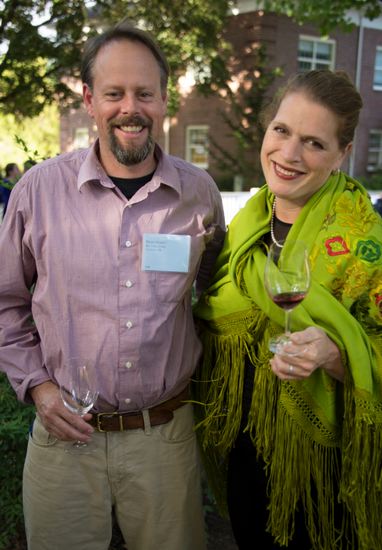
2015 Big Table Farm Wirtz Vineyard Willamette Valley Edelzwicker 13.3% alc., 299 cases, $28. Label shows pear blossoms from Wirtz Vineyard drawn by Clare. Old vine Gewürztraminer, Pinot Gris and Riesling from Wirtz Vineyard planted in the late 1960s. Barrel fermented in neutral oak to dryness and malolactic complete. Bottled unfined and unfiltered. · Light golden yellow color in the glass. Aromas of cut apple and poached pear. Pleasant flavors of apple, pear, and a hint of peach. Steely in character, with a slightly creamy mouthfeel and a dry finish. An all purpose white wine. Score: 87
2015 Big Table Farm Wirtz Vineyard Willamette Valley Pinot Gris 13.2% alc., 159 cases, $32. Label shows pasture wild flowers drawn by Clare. The clone is particularly dark and the orange color of the wine reflects this. Fermented on the skins and stems, and finished fermenting in old French oak barrels. Bottled unfined and unfiltered. · Moderate pinkish orange color in the glass. Reserved aromas of peach, spice and terra-cotta. Unique in taste, with flavors of strawberry, peach, yellow raisin and a hint of smoke and baking spice. Nicely balanced with a juicy finish. Score: 88
2014 Big Table Farm Wirtz Vineyard Willamette Valley Pinot Noir 13.5% alc., 367 cases, $48. Label shows Maple seeds drawn by Clare. The original plantings were vines obtained from Charles Coury so their origin and clonal type is unknown. 40 plus year-old vines. Bottled unfined and unfiltered. · Moderately light reddish purple color in the glass. Welcoming aromas of cherry, cardamom spice and toasty oak. Light to mid weight flavors of cherry, crystallized raspberry, cranberry, spice and smoke. Good energy and freshness, with surprising mid palate presence, gentle tannins and some finishing goodness. Score: 92
2014 Big Table Farm Cattrall Brothers Vineyard Eola-Amity Hills Oregon Pinot Noir 12.9% alc., 193 cases, $48. Label shows Tom Cattrall’s grape deliver truck drawn by Clare. Own-rooted Wädenswil clone organically farmed. Bottled unfined and unfiltered. · Moderately light reddish purple color in the glass. Pleasant perfume of crushed berries. Light to mid weight flavors of black cherry and plum with generous tannin somewhat buffered by juicy acidity. Complimentary oak is supportive, and the tangy, cherry-driven finish satisfies. Score: 91
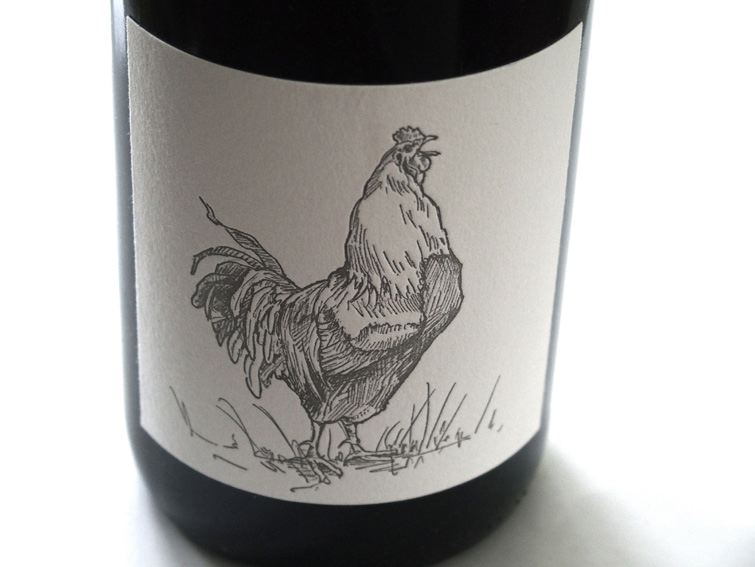 2014 Big Table Farm Sunnyside Vineyard Willamette Valley Pinot Noir 13.7% alc., 348 cases, $48. Label shows roosterdrawn by Clare. This vineyard was planted in 1971. Bottled unfined and unfiltered. · Moderate reddish purple hue in the glass. Shy aromas of black cherry and apple fritter. A middleweight fruit-driven wine with plenty of black cherry and black raspberry flavor accented with savory herbs. Noticeable but not intrusive tannins, with a comforting texture and a modestly long but vibrant finish. This wine grows on you over time in the glass. Score: 92
2014 Big Table Farm Yamhill-Carlton AVA Oregon Pinot Noir 13.9% alc., 228 cases, $48. Label shows Barn of Yamhill County drawn by Clare. Addition of Kalita Vineyard combined with Coats and Whitney vineyards. Bottled unfined and unfiltered. · Moderately light reddish purple color in the glass. Aromas and flavors of blackberry and black cherry, showing inviting intensity and purpose that carries over to the exuberant finish. Seamless, with supportive tannins and an earthy thread in the background. Score: 92
La Crema, Windsor, CaliforniaJackson Family Wines has made large inroads into the Willamette Valley in the past few years, acquiring wineries (Gran Moraine formerly Solena Estate Winery, Penner-Ash, WillaKenzie Estate), vineyards (Zena Crown, Maple Grove - unplanted), buildings and land acquired from Evergreen International Aviation in McMinnville and the historic Taylor Hardware building in downtown McMinnville. Jackson Family Wines now owns 1,525 acres of land in the Willamette Valley with more than 450 acres planted. Both the company’s La Crema and Siduri brands based in California source grapes from its Oregon properties. La Crema Vinera, meaning “best of the vine,” was the original name of this winery established in 1979. It has been a training ground for several of California’s North Coast most notable winemakers and is currently under the direction of Elizabeth Grant-Douglas. The La Crema Willamette Valley Pinot Noir is available widely at fine wine retailers and restaurants. Visit www.LaCrema.com.
2014 La Crema Willamette Valley Oregon Pinot Noir 14.5% alc., 24,511 cases, pH 3.66, TA 0.60, $30. 98% estate fruit from eight vineyards. 100% de-stemmed, 3-day cold soak, fermented in opentop tanks, aged 9 months in French oak barrels, 23% new. · Moderate reddish purple color in the glass. Fruit aromas of black cherry and black raspberry are complimented by aromas of savory herbs and toasty oak, with the oak showing up more over time in the glass. Middleweight flavors of black cherry, black raspberry and blackberry are underlain with subtle smoky oak. Good intensity of flavor, integrated ripe tannins, and a juicy finish driven by bracing acidity. Score: 90
Lumos Wine Company, McMinnvilleDai Crisp and his spouse produce two Pinot Noirs from the home Wren Vineyard in Philomath, Rudolfo Vineyard and the Temperance Hill Vineyard in the Eola-Amity Hills. Dai has been managing the Temperance Hill Vineyard since 1999, a source of grapes for many of Oregon’s most notable wineries. The LUMOS tasting room is located on the Crisp family farm in Wren, Oregon, 16 miles west of Corvallis. These two wines consistently represent two of the most outstanding values in Oregon Pinot Noir today. Visit www.lumoswine.com.
2014 LUMOS Five Blocks Willamette Valley Oregon Pinot Noir 590 cases, $25. · Moderate reddish purple color in the glass. The nose reveals itself slowly over time in the glass, eventually offering very pleasant aromas of dark red fruits with cherry standing out. Black cherry flavor is at the core of this mid weight styled wine, but added accents of spice, herbs and oak add interest. The tannins are mild, making for easy approach ability, and the velvety texture is immensely satisfying. Along with the textural interest, the finish attracts interest with its intensity. Score: 91
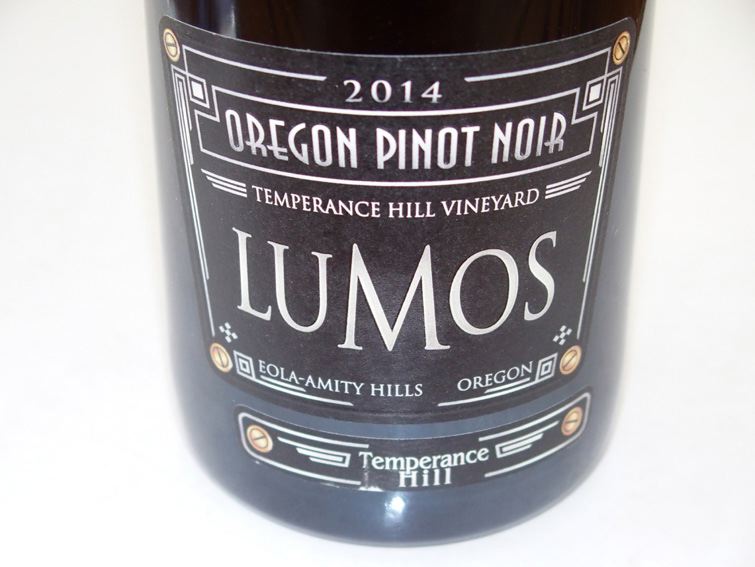 2014 LUMOS Temperance Hill Vineyard Eola-Amity Hills Oregon Pinot Noir 190 cases, $45 · Moderate reddish purple color in the glass. An exceptional wine with very expressive aromas of muddled black cherries and spicy oak. Sleek and refined on the palate, with powerful black cherry and black raspberry fruit flavors that saturate the mid palate and persist through a very long finish. A wine of pedigree, with courageous balance and an aim to please. Score: 94
This vineyard was first established in 1981 in the Eola-Amity Hills AVA. 97 acres are planted to Pinot Noir (89%), Pinot Gris (4%), Gewürztraminer (4%) and Chardonnay (3%). The site is certified organic and is farmed to Oregon Tilth organic standards, and is Food Alliance and Salmon Safe certified. Temperance Hill Vineyard, at 650-890 feet elevation, is the highest vineyard producing fruit in the Eola- Amity Hills and is a very cool site. It is bordered on two sides by Bethel Heights and Cristom. The vineyard has been managed by highly respected grape grower Dai Crisp since 1999. 80% of the wineries that source grapes from Temperance Hill Vineyard make vineyard designates. Notable sourcing wineries include Adelsheim, Bergstrom, Brooks, Chapter 24, Elizabeth Chambers, Elk Cove, Evesham Wood, Lange, Lumos, Raptor Ridge, St. Innocent and Walter Scott. Mark Vlossak of St. Innocent Winery considers Temperance Hill Vineyard to be at the top of Oregon vineyard hierarchy.
Saffron Fields Vineyard, Yamhill-CarltonChemical engineers, Dr. Angela Summers and Sanjeev Lahoti, hail from Houston, Texas. As they became wine enthusiasts, they visited the Willamette Valley in 2003, met with a realtor and found a grass seed farm on Laughlin Road in Yamhill near WillaKenzie Estate, Lénne Estate and Deux Verts Vineyard in the Yamhill- Carlton AVA. They developed the property, traveling to the site several times a year, staying in a small shack on the vineyard. They planted the first 12 acres of Pommard clone Pinot Noir in 2007, and added 12 more acres in 2009. Today there are 32 acres of Pinot Noir (clones are Pommard, Wädenswil, 115, 667, 777, and “828”) and 3 acres of Chardonnay (clones 76 and 548). The vineyard is dry farmed using sustainable practices (LIVE certified). Their initial grapes were bought by winemaker Tony Rynders who became their winemaker. The barn on the property was disassembled and the wood salvaged to be used in a tasting room constructed on site. The architecturally alluring and serene tasting room opened in 2013 and contains the owners’ personal collection of contemporary art and houses art exhibits as well. A Japanese-styled garden, orchard, vegetable garden and sculpture garden were added. The tasting room is open daily. Visit www.saffronfields.com.
2014 Saffron Fields Vineyard Willamette Valley Oregon Pinot Noir 14.1% alc., 300 cases, $40. Release November 1, 2016. Estate fruit plus sourced fruit to reflect the region including five of the six sub AVAs of the Willamette Valley. Aged in French oak barrels, 30% new. · Moderate reddish purple color in the glass. The nose is rather exuberant with aromas of blackberry, black raspberry and toast. Silky in the mouth, with flavors of darker berries and cake spices. Forward and easy to drink in a light to mid weight style, with soft tannins and a pleasing finish. Score: 90
2014 Saffron Fields Vineyard Yamhill-Carlton Oregon Pinot Noir 13.8% alc., 700 cases, $55. Release November 1, 2016. 100% sustainably farmed Saffron Fields Vineyard. Clones are Pommard, Wädenswil, 115 and 777. Aged in French oak barrels, 39% new. · Moderately dark reddish purple color in the glass. Appealing melange of dark fruit aromas emerge slowly over time in the glass. Attention-grabbing black fruit presence and length with inviting contributions of earth, iron and oak notes. The velvety mouthfeel is particularly engaging, the fine grain tannins are bold yet compatible, and the wine doesn’t hold back on the finish. Score: 92
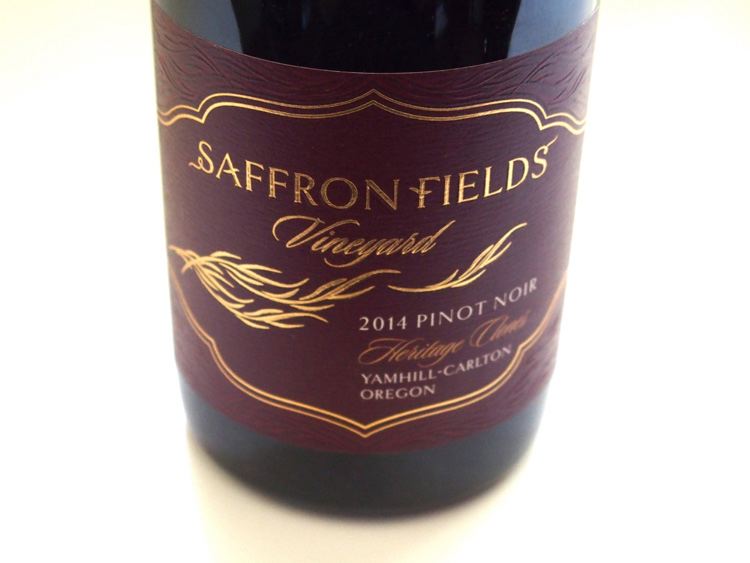 2014 Saffron Fields Vineyard Heritage Clones Yamhill-Carlton Oregon Pinot Noir 14.1% alc., 500 cases, $45. Release November 1, 2016. 100% estate grown Pommard and Wädenswil clones. Aged in French oak barrels, 33% new. · Moderately dark reddish purple color in the glass. Leading off are aromas of blackberry jam, earthy flora and a hint of vanilla. A glorious mid weight plus core of dark fruits arrive on the attack with luscious richness and follow through with a well-sustained mid palate, finishing long and generous. Despite the generous sap, the wine is light on its feet with submerged tannins and exquisite balance. Still highly pleasurable the following day from a previously opened and re-corked bottle. Score: 93
WillaKenzie Estate, Yamhill-CarltonJackson Family Wines acquired WillaKenzie Estate in the Yamhill-Carlton District of the Willamette Valley this year so the wines below were crafted by the winemaking team headed by Thibaud Mandet. The winery was founded by Bernard and Ronni Lacroute who released their first wines in 1995, produced at their modern gravity flow winery. The name WillaKenzie was derived from the name of the sedimentary soils common to the Yamhill-Carlton region. Total production, 100% estate grown, is about 20,000 cases annually. The winery’s nicely-appointed tasting room is open daily. Visit www.willakenzie.com.
2014 WillaKenzie Estate Gisèle 14.2% alc., pH 3.70, TA 0.48, 7,500 cases, $30. Released September 2016. A blend of clones grown on the WillaKenzie estate and is intended to be approachable early. This wine is named after Bernard Lacroute’s sister. · Moderate reddish purple color in the glass. Aromas of cherry, exotic spices, crumb cake and earthy flora. Cherry-driven in a feminine style that is vibrantly flavored with crisp acidity, and a lip-smacking finish with some persistent cherry goodness. Score: 91
2014 WillaKenzie Estate Pierre Léon Yamhill-Carlton Willamette Valley Pinot Noir 14.2% alc., 3,500 cases, $55. The 25-acre Pierre Léon Vineyard was planted in 1996 to clones 113, 114, 115 and 777. The wine is named after founder Bernard Lacroute’s father, it is a more masculine and structured expression of this estate vineyard. · Moderate reddish purple color in the glass. The nose is somewhat primary, offering only scents of savory herbs. Much more expressive on the palate, with a mid weight plus core of black cherry fruit. Structured, yet suave, with exquisite balance and a giving, but not exceptional finish. This wine has a strong physique and is keeping back some of its charm at present and needs more time in bottle. I think this wine will be more glorious in another 2-3 years. Score: 92
Pinot BriefsBronco to Launch America’s First Wine with Helix Stopper Bronco Wine company will begin closing wines under its Red Truck® brand using the innovative Helix packaging, the world’s first cork stopper and glass bottle with easy-to-open and re-close technology. Helix was developed by Amorim and Owens-Illinois, the world leaders in cork and glass packaging. Bronco’s Red Truck® will be the first US wine to employ this innovation. The ergonomically designed stopper made from cork and a glass bottle with an internal thread in the neck allow for twist opening without the need of a corkscrew and re-sealable convenience.
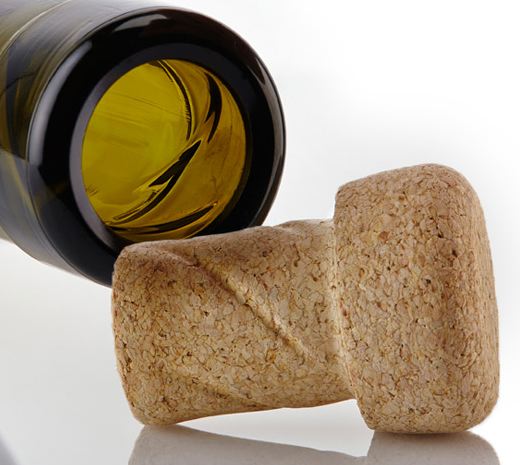 Purple Hands New Dundee Winery Purple Hands Winery has opened a 5,000-square-foot tasting room and winery as part of the town of Dundee’s revitalization. Owner Cody Wright, whose father is Pinot Noir icon Ken Wright and the stepdad of winemaker Rollin Soles (Argyle, ROCO), considers himself born with grape-stained fingers, hence the name of his wine label. The structure is painted a shade of red reflecting the red Jory soils in the Dundee Hills region. The Dundee City Council has formulated an urban renewal plan to improve the town’s main street with revamped storefronts and a promenade that will be wine tourist, bicyclist and pedestrian friendly. The improvements are coinciding with the Highway 99 bypass project that will hopefully reduce the traffic bottleneck in downtown Dundee. Purple Hands produces about 5,700 cases a year, primarily single-vineyard Pinot Noirs. Read more at www.oregonwinepress.com/purple-hands-new-face-of-dundee. WillaKenzie Estate Joins Jackson Family Wines Portfolio This month it was announced that Jackson Family Wines acquired WillaKenzie Estate, a top Willamette Valley producer of Pinot Noir and Pinot Gris.The winery was named after the predominant sedimentary soil type on the Estate. 13 different Pinot Noir clones are planted in the estate vineyards as well as plantings of Pinot Gris, Pinot Blanc, Gamay Noir, Pinot Meunier and Dijon clones of Chardonnay. The transaction includes the WillaKenzie Estate brand, a gravity-flow winery, an hillside hospitality center with expansive views, 100 planted acres at the Estate in the Yamhill-Carlton AVA, and 25 planted acres of Pinot Noir at the Jory Hills Vineyard in the Dundee Hills. Anderson Valley Winegrowers Association Announces 2017 Schedule Four events will be offered in 2017: Two Holiday Passport Weekends the first two Saturdays and Sundays in December; 12th Annual International Alsace Varietals Festival, February 25-26, 2017; 20th Annual Anderson Valley Pinot Noir Festival, May 19-21, 2017; 5th Annual Anderson Valley Barrel Tasting Weekend, July 22-23, 2017. Additional information and tickets for all these events can be found at www.avwines.com. Resveratrol Pill on the Horizon As reported in the Wall Street Journal (August 2, 2016) and other news publications, scientists are trying to put the polyphenol, resveratrol, into a pill form that would duplicate the observed health effects found in laboratories on yeast worms, fruit flies and mice. Studies to date have found that to get a beneficial effect from resveratrol, a very large daily dose equivalent to about 1,000 bottles of red wine are required and this dose produces side effects such as nausea, vomiting, diarrhea and kidney problems in human subjects. Researchers in Australia are looking at increasing the potency of resveratrol at a moderate dose level by combining it with other compounds normally found in wine to duplicate the health- enhancing natural synergy between resveratrol and other wine compounds. Stateside, Jupiter Orphan Therapeutics is developing a formulation of resveratrol that prevents it from being broke down in the liver, increasing its bioavailability. There is no current evidence that available dietary supplements of resveratrol have any health benefit. Preference for White Wine Linked to a Specific Gene An interesting post by The Academic Wino at www.academicwino.com reviewed and analyzed a study published last year in the European Journal of Human Genetics. The study of genotypes of 3885 individuals suggested that a preference for white wine may at least in part be controlled by the HLA-DOA gene and this preference may be stronger in women than in men (two times greater in this study). No associations were found for red wine preference. The authors of the study speculated that the preference may occur through olfactory recognition since it is known that there are associations between HLA and preference for certain odors. Differences in Oak Sensitivity Can Influence Winemaker Styles of Pinot Noir Tim Hanni, Master of Wine, the author of Why You Like the Wines You Like, maintains that winemakers who understand their own sensitivities to oak as well as differences in their consumers’ sensitivities are more prepared when buying barrels and blending wines. For some people, oak is a problem because it contains high levels of tannins that are astringent. Supertasters or hypertasters make up 25% of the population and are hypersensitive to basic tastes and do not like strong tannins. Nontasters are more forgiving of oak tannins. Pali Wine Co. New Tasting Room in San Diego Pali Wine Co. is opening a tasting room on October 19 in San Diego’s Little Italy district located at 2130 India Street. Grand opening festivities will be on the weekend of November 5, 2016. To accompany the wines, a creative small-plate menu will be offered. Pali Wine Co. also has tasting rooms in Lompoc at the winery and in Santa Barbara’s Funk Zone. Established in 2005, Pali Wine Co. produces vineyard designate and appellation specific Pinot Noir and Chardonnay sourced from vineyards in California and Oregon. Winemakers are Aaron Walker and consultant Kenneth Juhasz. Visit www.paliwineco.com. Hyde de Villaine Acquires Property HdV bought the 33.5-acre site in southern Napa Valley that hosts its winery. The purchase includes 24 acres of surrounding vineyards. HdV is a partnership between grower Larry Hyde and Domaine de la Romanée-Conti’s Aubert de Villaine. The winery will also continue producing wines from the Hyde Vineyard located in Napa Carneros. Very Cool Wine Opener The vintner’s standing wine opener available at www.potterybarn.com is an extravagant ($299) device for opening wine but its industrial gear design is very appealing.
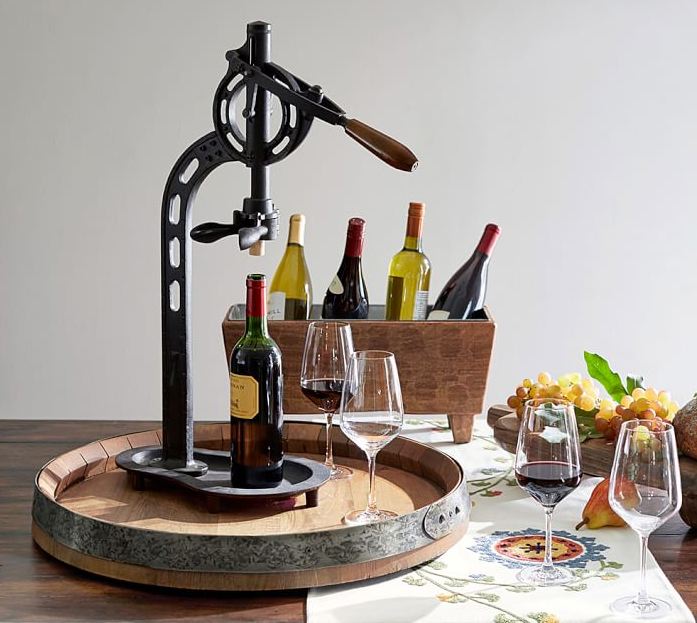 Evening Land Vineyards Now Evening Land With the 2014 vintage, Evening Land, formerly Evening Land Vineyards began exclusively producing Pinot Noir and Chardonnay from the 82-acre Seven Springs Vineyard in the Eola-Amity Hills AVA. The 2014 vintage was the 30th anniversary vintage from Seven Springs Vineyard and marks the first vintage with Rajat Parr and Sashi Moorman as the sole stewards of the vineyard. New labels were designed by Michael Kirts. In 2014 an Anden Pinot Noir was produced in small amounts from old phylloxera affected vines and is available only as part of a 12-bottle case including the winery's other 3 top bottlings: La Source Pinot Noir, La Source Chardonnay and Summum Chardonnay. The Estate series of wines included Seven Springs Pinot Noir, Seven Springs Chardonnay and Seven Springs Gamay Noir. Visit www.elvvines.com.
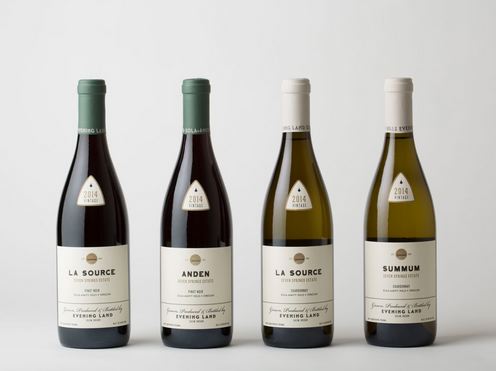 Wine Tasting Olympics The 43rd Annual Professional and Amateur Wine Tasting Olympics will be held once again this year at Chicago's oldest wine bar, Geja's Café. This is the oldest event of its kind in the nation. Both experts and amateurs are invited on Sunday, November 6, 2016, at 1:00 p.m. for a chance to win an engraved crystal decanter. Contestants are challenged to identify the grape, place of origin and vintage. Entrance fee is $30. RSVP to Geja's Café at 773-281-9101. Geja's Café was recently voted the nation's Best Romantic Restaurant by USA Today readers.
Are Wine Critics, Winemakers and Somms at Increased Risk for Cancer?In the past two years, two prominent wine writers died from cancer. Oregon wine writer and critic Cole Danehower died in 2015 from pancreatic cancer and Greg Walter of the Wine Spectator and Pinot Report passed away in 2016 from colon cancer. There have been several other wine professionals in the news who died in recent years as well including Willamette Valley Vineyards winemaker Forest Klaffke (throat cancer, 2012), Poetic Wines owner and winemaker Katy Lovell (pancreatic cancer, 2013), Barossa Valley Australia winemaker Bob McLean (liver cancer, 2015), Burgundy vintner Ann-Claude Leflaive (cancer, 2015) and Dry Creek Valley winemaker John Pedroncelli (cancer, 2015). Of course, these isolated cases do not document a significantly increased risk of dying from cancer among wine professionals. In the United States alone in 2016, there is expected to be 595,690 cancer deaths reflecting the fact that cancer is a prevalent cause of death. However, the increased exposure to alcohol among wine critics, winemakers and sommeliers compared to many in the general population suggests that they may be at heightened risk of dying from cancer.
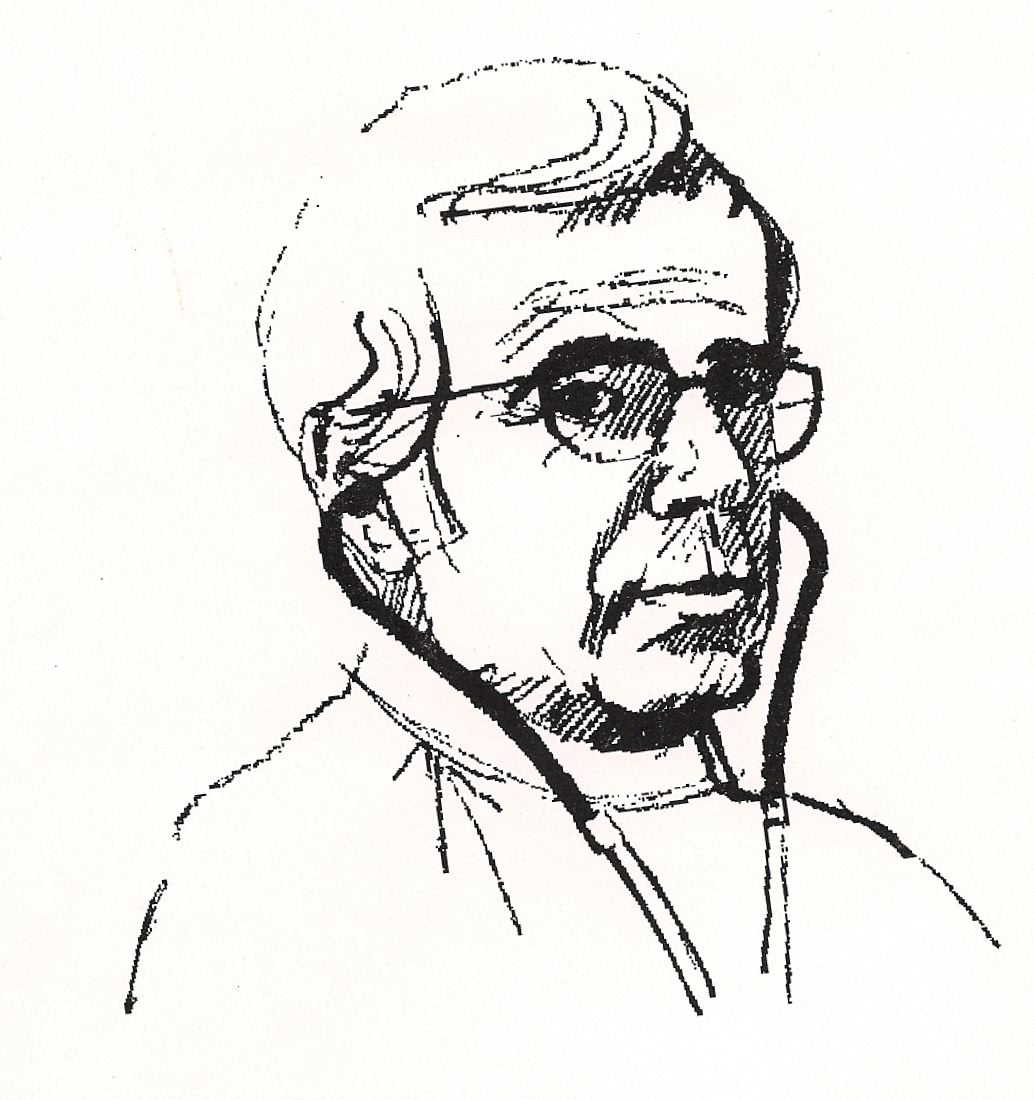 Since I taste wine almost daily, I wondered about the health risk. It has been well established since the 1980s that alcohol is a carcinogen at high levels of alcohol intake at several sites in the human body including the mouth, throat, larynx, esophagus, stomach, colon, rectum, pancreas, liver, lung and breast. There is a dose response curve, meaning that the risk increases the more alcohol people consume on a regular basis with smoking tobacco greatly adding to the risk for all cancers, particularly throat and mouth cancer. The quantity of alcohol consumed matters most for men’s cancer risk, the frequency of drinking is more important for women’s risk according to Dr. Arthur Klatsky, a renowned health and alcohol researcher. I asked Curtis Ellison, M.D., Professor of Medicine and Public Health at Boston University and one of the country’s top authorities on the relationship of alcohol and health, if he knew of a study that showed an increased risk of cancer among wine writers and critics, and he did not. A.H. Finkel, M.D., who has written about alcohol and health, told me in good humor that assuming judicious spitting, the only two risks among wine tasters are (1) dissolution of dental enamel, presumably by acidic wine being held in the mouth for long periods of time (and exacerbated by fastidious individuals brushing their teeth soon after slurping and swishing), and (2) stained neckties (a declining risk since hardly anyone wears neckties any more). He also mentioned that like all critics, those of wine share the risk from enraged subjects of their trade. Research published in 2015 in the Australian Dental Journal has shown that acid in wine can expose teeth to erosion. This study found that just 10 one-minute episodes of wine tasting normally experienced by wine tasters was enough to erode tooth enamel, with teeth becoming vulnerable within a few minutes of wine acid exposure. Dr. Sarbin Ranjitar of the University of Adelaide who conducted the study said, “With professional wine tasters and winemakers tasting anywhere from 20 to 150 wines per day, and wine judges tasting up to 200 wines per day during wine competitions, this represents a significant risk to their oral health. Our results reinforce the need for people working the profession to take early preventive measures, in consultation with their dentists, to minimize the risks to their teeth.” These measures include not brushing teeth the morning of a wine tasting or if brushing is required, use chewing gum to stimulate saliva which is naturally protective. After wine tasting, do not brush the teeth as that may damage the enamel, but rinse with water and when it is time to clean the teeth, put some toothpaste on a finger and gently clean the teeth. I tested my own blood alcohol level on several occasions after tasting with spitting a series of 8 to 12 wines with multiple passes through each wine (my usual tasting regimen). My blood alcohol level was less than 0.08% on every occasion. However, I believe those critics who taste large numbers of wine at one sitting, even with judicious spitting, will exceed that blood alcohol level. Spitting does not insulate one from alcohol absorption for it is proven that there is some absorption of alcohol through the mucous membranes of the mouth (alcohol is soluble in both water and saliva and moves easily and quickly within 10 to 20 seconds across membranes), and some alcohol is absorbed as vapor through the lungs. Fortunately, alcohol dries the mucous membranes of the mouth, causing the secretion of mucous that protects against absorption. The jury is out since their is no scientific research to implicate an increased risk of cancer among those who do extensive wine tasting appropriately. One thing is for sure, however, as Dr. Finkel noted, like all critics, those of wine share the risk from enraged subjects of their trade. This stress is undoubtedly unhealthy.
Did this short discourse pique your interest about the risks of cancer among wine drinkers? Read further if you are inquisitive. There were several major studies published in 2015 regarding the association of alcohol consumption with the risk of cancer, and the papers were critically reviewed by the International Forum on Alcohol Research. The first study was published in the British Medical Journal and titled “Light to moderate intake of alcohol, drinking patterns, and risk of cancer: results from two prospective US cohort studies.” This study involved 88,084 women and 47, 881 men participating in the Nurses’ Health Study and Health Professionals Follow-up Study, followed until 2010. The Forum considered this a well-done analysis of two very large cohort studies and felt that this was an important study presenting data that is of relevance to individuals and agencies providing advice regarding alcohol consumption. That said, the Forum pointed out that all dietary and lifestyle factors shown to increase the risk of cancer were not included in the report. The authors of the study concluded that light to moderate drinking (up to two drinks per day) is associated with a minimal increased risk of overall cancer. For men who have never smoked, risk of alcohol related cancers is not appreciably increased for light and moderate drinking. For women who have never smoked, risk of alcohol related cancers (mainly breast cancer) increases even within the range of up to one alcoholic drink a day. For both genders, there seemed to be a dose-response increase in risk of cancer with larger amounts of alcohol. Heavy drinking markedly increased the risk of upper airway and digestive tract cancers. Smoking was identified as an even more important risk factor than alcohol for cancers. The second study was published in Permanente Journal by chief author Arthur Klatsky, M.D., titled “Alcohol intake, beverage choice, and cancer: A cohort study in a large Kaiser Permanente population.” The results of this very large study indicated that heavy drinking (equal to or greater than 3 drinks a day) was associated with an increased risk of upper airway/digestive tract, lung, female breast, colorectal and melanoma cancers, with light to moderate drinking related to all but lung cancer. No significantly increased risk was seen for 12 other cancer sites: stomach, pancreas, liver, brain, thyroid, kidney, bladder, prostate, ovary, uterine body, cervix, and hematologic system. For all cancers combined there was a progressive relationship with all levels of alcohol drinking. Alcoholic beverage choice played no major independent role. A third study was published in the British Medical Journal, titled “Alcohol consumption and site-specific cancer risk: a comprehensive dose-response meta-analysis.” The authors of the study concluded that heavy drinking (the study defined one typical drink as 12.5 g or less per day) of >50 g/day of alcohol increased the risk for cancers of the upper airway/digestive tract, lung, female breast, and colon and rectum; for those neoplasms there was a clear dose-risk relationship. Significant increases were reported for heavy drinking for cancers of the stomach, liver, gallbladder, pancreas and lung, but the risk ratio for most of these were lower. There was an indication of a positive association between alcohol consumption and risk of melanoma and prostate cancer. A fourth study was published in Cancer Causes Control titled “Incident cancers attributable to alcohol consumption in Germany, 2010.” The authors found that there was an apparent increase in the population attributable risk of cancer for men for upper airway/digestive tract and colon and rectum, but decreases from alcohol for liver cancer. For women, there was a decrease in colon and rectal and liver cancer from alcohol, but increases for breast and upper airway/digestive tract cancers. As the Forum points out, all these studies describe an increased risk for many cancers among heavy drinkers, especially cancers of the upper airway and digestive tract. Even with the data from these studies, we still cannot state reliable threshold levels of drinking that increase the risk of cancer. Most reports on alcohol and cancer are flawed because they lack information on confounding, drinking patterns, beverage choice and the effects of under reporting of alcohol intake. The studies also omit a discussion of total mortality versus cancer mortality. One additional complicating factor is that published studies offer varying definitions of light, moderate and heavy drinking making results more difficult to compare and threshold levels to be determined. One more interesting study bears mention. A report published in 2016 in the British Journal of Sports Medicine found that drinkers who exercised 150 minutes a week reduced their chances of dying due to any alcohol related illness. In physically active groups, only harmful levels of drinking (more than 39 standard drinks a week for men and 11-29 standard drinks a week for women) were associated with an increased risk of cancer death and death from any cause. So although the drinking of an average of 2.4 standard drinks a day for men and 1.6 standard drinks a day for women was associated with a 36% greater risk of death from cancer, the risk was substantially lessened or offset by physical activity. In summary, the words of Dr. Klatsky should be noted, “For most persons older than age 50 years, the overall benefits of lighter drinking, especially the reduced risk of atherothrombotic disese, outweigh possible cancer risk. For young persons, the possible increased cancer risk at moderate intake should be part of an individual’s estimation of the overall risk-benefit equation for alcohol drinking.” |